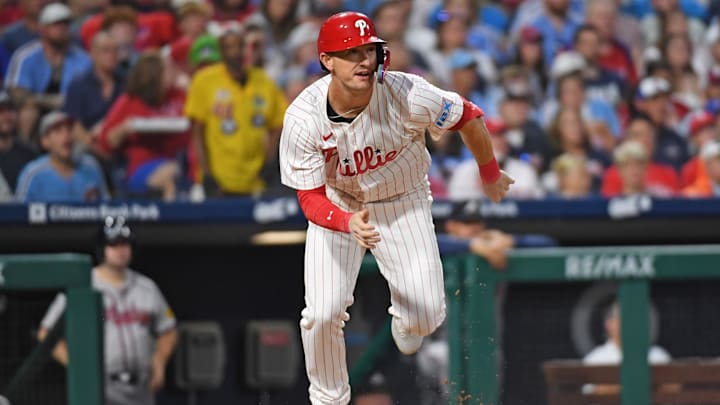Austin Hays
Perhaps the most disappointing of the three key acquisitions at the trade deadline by the Phillies, Austin Hays didn’t turn out to be the missing piece of their outfield puzzle. The Phillies landed Hays in a trade with the Baltimore Orioles that sent Domínguez and Cristian Pache the other way.
In getting Hays, Philadelphia had passed over potential difference-makers like Brent Rooker, Luis Robert Jr., and even Jorge Soler. The Phillies believed that by giving Hays more playing time, he would revert to his All-Star form seen just last season. Added to the fact that he was one of the stronger defenders on the market at the time, it should have given the team a much-needed boost both offensively and defensively.
However, despite showing some promise for a few games, his tenure with the Phillies was mainly plagued by injuries. A hamstring injury sidelined him for almost two weeks in August, followed by a kidney infection that kept him out of the lineup for the bulk of September. In the end, Hays managed to get into only 22 games of action, posting a .256 average and .672 OPS with eight runs scored, five doubles, two home runs and six RBI. More alarming was the fact that he struck out 19 times in 78 at-bats without registering a single walk, demonstrating his aggressive plate discipline.
As such, the Phillies weren’t confident enough to put him in the everyday lineup during their postseason run. Hays only saw action in two games, including one start, during the NLDS. He struck out three times in his four at-bats.
For the pieces that the Phillies gave up, the loss of Pache didn’t hurt as much as he was subsequently designated for assignment and put on waivers by the Orioles just a few days after his acquisition. However, Domínguez played a more significant role for Baltimore down the stretch. He ultimately took over the closing duties from Craig Kimbrel and helped the Orioles lock down a playoff spot in the end.
Overall, the Phillies had hoped that Hays would have resolved their outfield situation for this year and beyond, along with providing some clutch hitting and power with his bat to boost their offensive lineup. However, when the Phillies needed him the most down the stretch, he was nowhere to be found.
The Phillies are now likely to cut ties with the 29-year-old outfielder, according to MLB insider Robert Murray, and search for an alternative solution this offseason. As a result, the Hays trade has turned out to be a complete flop, giving it a dismal D grade.
Final Grade: D
